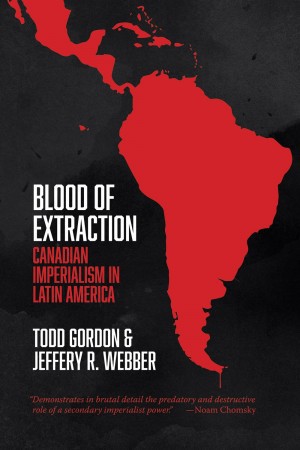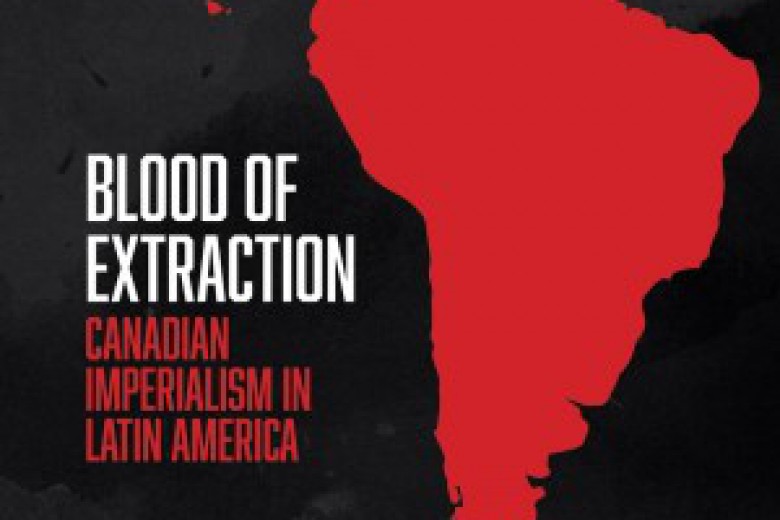
Backroom dealings and kick-back schemes
Before Blood of Extraction, no book had approached the theme of Canadian imperialism in Central America in its entirety, and with good reason: Canadian influence has become so central to the politics of accumulation, repression, and resistance in the region that even tracing a mental map is a dizzying task. Gordon and Webber, in this hundred-page section, achieve that mapping in a coherent narration that amounts to the most complete record composed to date. The three chapters, which cover Honduras, Guatemala, and the rest of the isthmus respectively, paint a picture of the expansion of Canadian capital at any cost, including the active pursuit of favourable political and legal conditions and a willful shrugging off of massive human rights abuses.
The book is important for having collected information from every corner of news, industry, and activist publication, but its greatest contribution lies in the use of documents released through access to information requests in Canada. Here Gordon and Webber show the backroom involvement of Canadian officials and tycoons in ensuring the political conditions for the continued profit of mining companies. Blood of Extraction uses sets of briefings and emails to prove beyond any doubt that Canadians regularly exert influence over local Central American political and legislative processes.
In one example, Canadian government representatives are shown to be active in securing conditions for the consolidation of Honduras’ illegitimate post-coup government; one Canadian official even travelled to Brazil to directly pressure ousted president Manuel Zelaya to contain protests and support elections. Similarly, in discussing the lead-up to Guatemala’s response to a ruling against Goldcorp by the Inter-American Commission on Human Rights (IACHR), Gordon and Webber expose a flurry of meetings between officials from the Canadian and Guatemalan governments, Goldcorp, and the IACHR.
The material accessed through information requests has left other researchers and activists with an unprecedented tool. Gordon and Webber cite the reference code for every accessed document in the book’s footnotes, providing the rest of us a guide to available material. Once a request for information has been completed in Canada, anyone can follow up and request access to the same documents using their corresponding codes. Where the initial search for information is a game of guesswork in the dark, the keys left in the back pages of Blood of Extraction make it easy for others to follow up in search of further answers.
Blood of Extraction falls short only in its lack of information on the role of local elites. Granted, the stated focus is an exploration of the roles played by Canadians, but the book leaves readers with an impression of Canadian-led imperialism rather than mutually beneficial alliances. Elites in each Central American country are heavily invested in their local extractive agendas, however, and also act transnationally across the region. Remilitarization is likewise driven first by domestic interests, but it has found a happy partner in the social conflict generated by Canadian mining. The case of Tahoe Resources’ San Rafael mine in Guatemala, for example, has been shown in Guatemalan and Canadian courts to involve not just local investors but kickback schemes benefiting landowners and politicians, while also allowing for the creation of a new institution for counter-insurgent intelligence gathering. At play here is much more than Canadian interests, and Blood of Extraction would only have been strengthened through a more detailed examination of the ties between Canadians and Central American economic, political, and military elites.
This critique aside, the depiction of Canadian mining operations within the context of Central American political economies is outstanding, and the book will surely remain a cornerstone of critical work on the region for some time.
Next:
Page 4. Kyla Sankey, Accumulation by dispossession, expanded reproduction, and class transformations in Latin America
Previous:
Page 1. Todd Gordon and Jeffery Webber, Introduction
Page 2. Jerome Klassen, Canada and the changing structures of global power
Ahead:
Page 5: Nicole Fabricant, Linking our consumptive lives to the trails of destruction
Page 6: Todd Gordon and Jeffery Webber, Response



